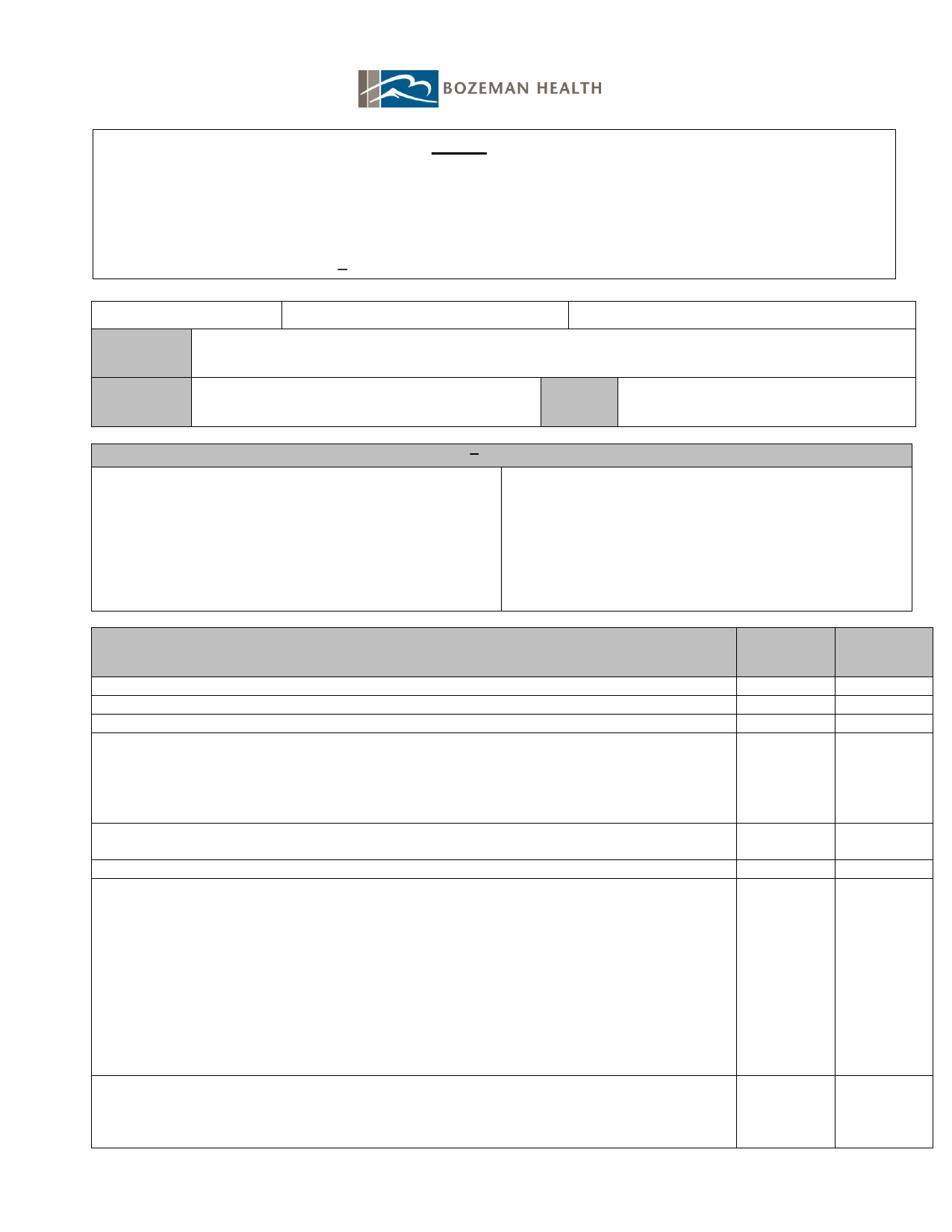
File info: application/pdf · 2 pages · 278.81KB
Competency Assessment Form #203: Operation, Inspection and ...
condition that must be corrected prior to use, see operating manual on MIND. State indicators of a low battery and actions to be taken 5. If audio alarm, vibration or visual lights do not appear on start-up, remove the…
Extracted Text
Competency Assessment Form #203: Operation, Inspection and Processing of Powered Air Purifying Respirator (PAPR) Versaflo TR-600 Series Competency Statement: The employee will demonstrate proper knowledge and skill in safe use of the Powered Air Purifying Respirator (PAPR). Related policy: System policy � Infection Prevention: Pandemic Preparedness and Response (12/18) [ X ] Organization-Wide Employee Name [ ] Department Specific: Dept. [ ] Other Job Title VALIDATION METHODS � multiple methods may be used. AP Actual performance P Presentation PE Peer evaluation RD Return Demonstration SP Simulated performance / lab T Test V Verbal/ interview response AV Audio and/or video review CR Chart review CS Case study/Example G Group Discussion SS Self Study Module NL Net Learning Module ME Mock Event O Other: PERFORMANCE CRITERIA Employee must complete all criteria without prompting to successfully complete the competency assessment Validation Method 1. Obtain the PAPR equipment. AP 2. Perform hand hygiene. AP 3. Turn the power on by pressing and holding the smaller blue button for 1 second. AP 4. Check the status lights of the flow level, battery charge and filter to confirm adequate levels for use. If continuous blinking or sounding of alarm this indicates a condition that must be corrected prior to use, see operating manual on MIND. State indicators of a low battery and actions to be taken Checkmark Indicates Criteria Met 5. If audio alarm, vibration or visual lights do not appear on start-up, remove the PAPR from service. Tag as faulty and contact Biomed Services. 6. Turn the power off. 7. Airflow Inspection prior to using the PAPR: a. Visually inspect to ensure the float ball moves freely in the airflow indicator tube and the gasket at the bottom end of the tube is in place. b. Attach airflow indicator tube into the motor/blower unit. c. Turn the motor/blower on by holding the power button for 1 second. Run the PAPR for up to 1 minute to allow the airflow to stabilize. d. With the airflow indicator in a vertical position, ensure that the bottom of the floating ball rests at, or above, the minimum flow mark at the letter J. e. If the airflow ball does not reach this level, do not use the PAPR, tag it as faulty and contact Biomed Services. f. State the indicators of a low flow and actions to be taken. 8. Low Flow Alarm Check prior to using PAPR: a. With the motor/blower on, simulate a low flow situation by removing the airflow indicator and tightly covering the outlet of the motor/blower with your hand. AP/V AP AP AP b. The motor should automatically speed up, attempting to compensate for the low flow condition. Continue making a tight seal � within 30 seconds the audible alarm and vibratory alarm should activate and the low flow indicator should flash red. c. Removing your hand should stop the alarms. d. If the unit does not alarm when flow is obstructed, so not use the unit. Tag it as faulty and contact Biomed Services. 9. Complete all inspections prior to entering the contaminated area. 10. Turn the power on by pressing and holding the smaller blue button for 1 second PRIOR to entering room. 11. Don the belt and connect the hood to the PAPR unit and don the hood. 12. Select desired airflow setting by pressing blue button with fan icon. 13. Don additional PPE (gown and gloves) 14. When patient care activities are complete, remove PPE (dirty gown and gloves) leaving PAPR hood and belt in place. 15. Perform hand hygiene 16. Don clean gloves and perform a quick surface wipe of the clear plastic shield of hood, PAPR and tubing with approved cleaning solution prior to removing the hood and PAPR. Turn off the PAPR. The hood can be reused for multiple use. 17. Perform hand hygiene 18. Don clean gloves to wipe the inside of the hood, PAPR and tubing with approved cleaning solution. 19. Perform hand hygiene. Assessment Date Performance Score Pass Meets Standards (all criteria met) Fail Unable to Assess/Needs Improvement/Does Not Meet All Criteria Validator Initials ACTION PLAN for reassessment if Failed: AP AP AP AP SP SP/AP SP/AP SP SP SP SP/AP Validator Name PLEASE PRINT Validator Signature Initials Developer(s) of Competency/Criteria: Infection Prevention and Education Date/s Initiated/Revised: 3/23/20 Date/s Reviewed: References/Resources: 3M Versaflo TR-600 Series Operations Manual (2017); Lippincott Nursing Procedures: Airborne Precautions (6/19).